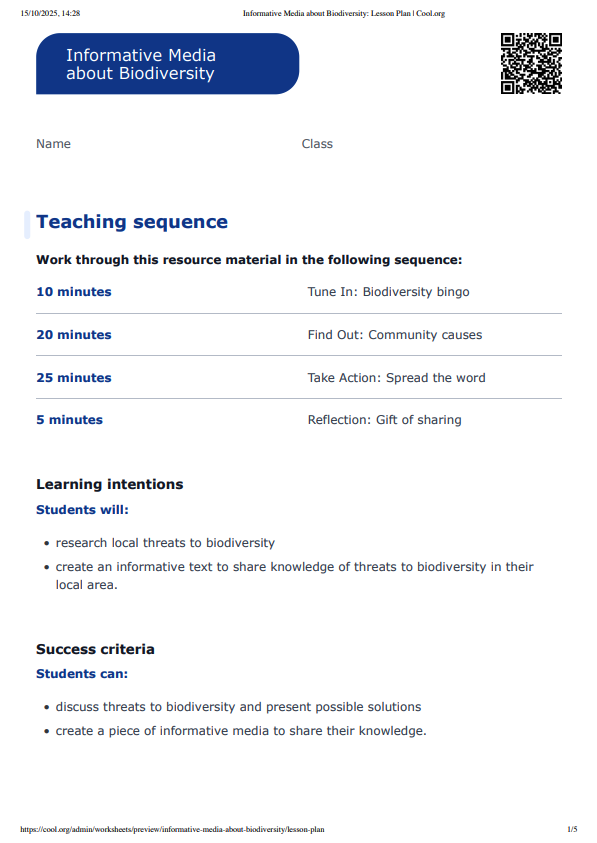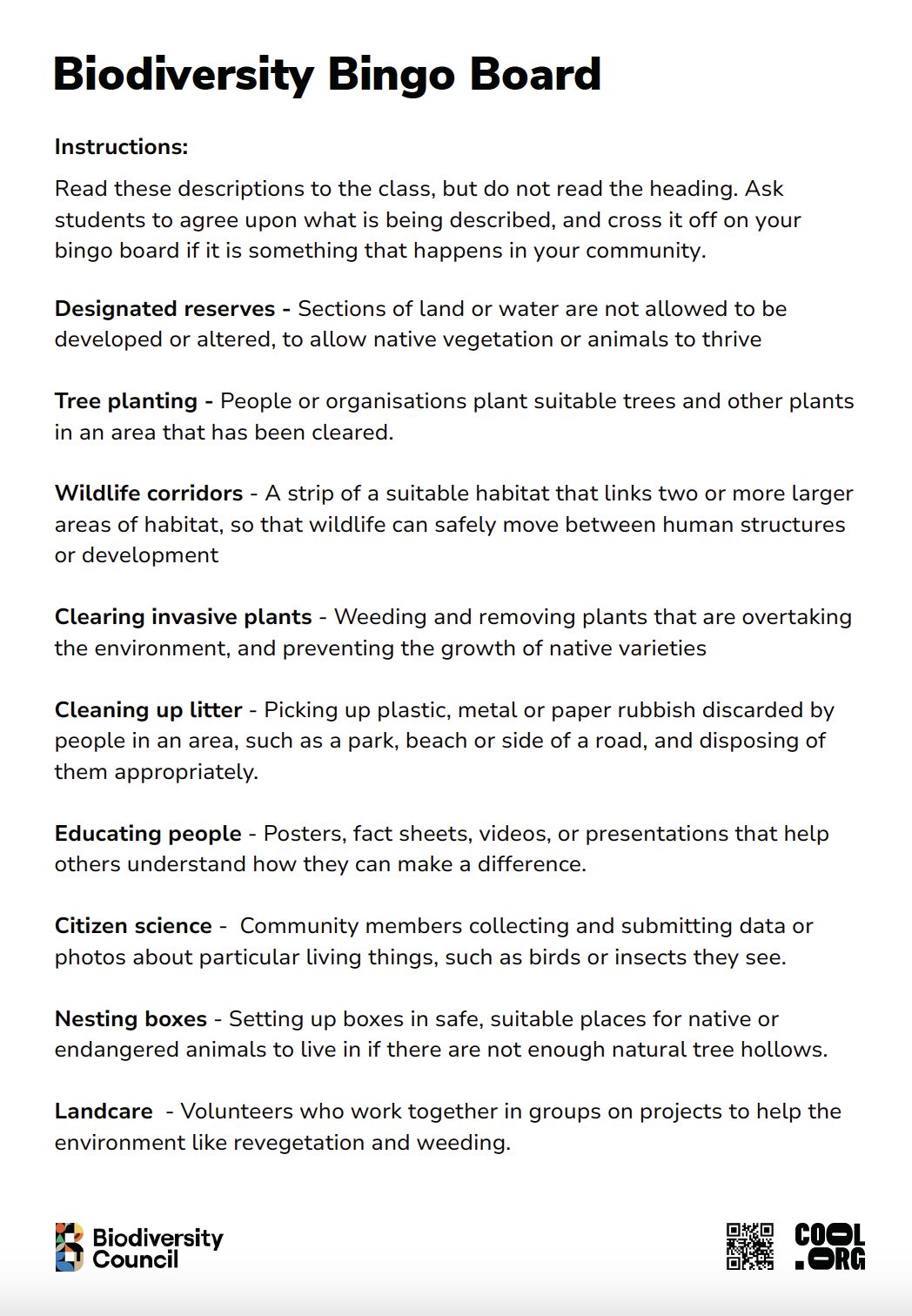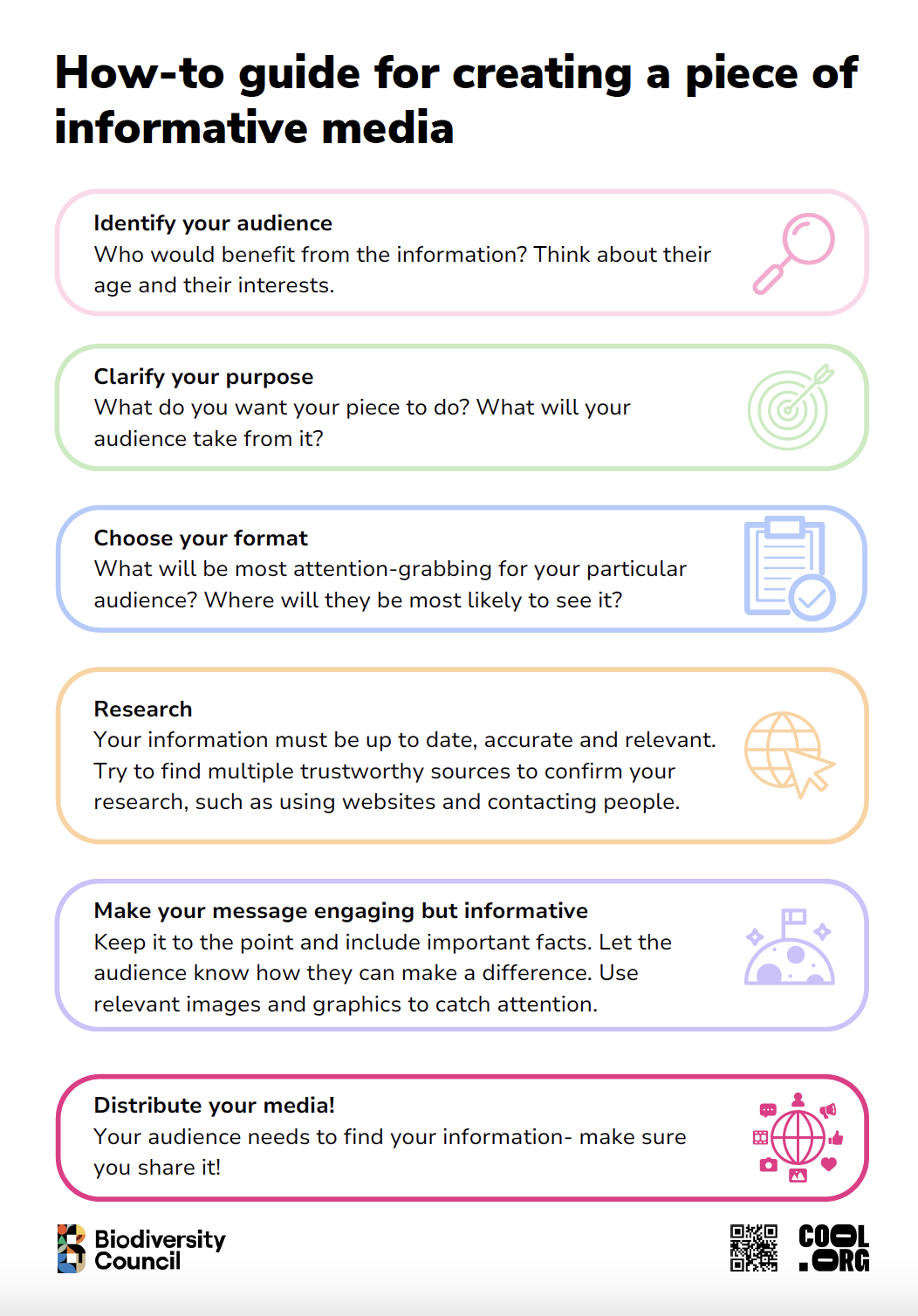Lesson summary
Students will research local threats to biodiversity in their area. Using this information, students will present possible solutions to eliminating the threats and create an informative media piece to share their knowledge with a target audience.
Learning intentions:
Students will:
- research local threats to biodiversity
- create an informative text to share knowledge of threats to biodiversity in their local area.
Success criteria:
Students can:
- discuss threats to biodiversity and present possible solutions
- create a piece of informative media to share their knowledge.
Lesson guides and printables
Curriculum links
Select your curriculum from the options below.
Lesson details
Skills
This lesson is designed to build students’ competencies in the following skills:
- creative thinking
- collaboration
- communication
- community engagement
Curriculum Mapping
Australian Curriculum (v9.0) content description:
Year 3, Science
Students learn to:
- compare characteristics of living and non-living things and examine the differences between the life cycles of plants and animals (AC9S3U01).
Year 3, English
Students learn to:
- plan, create, edit and publish imaginative, informative and persuasive written and multimodal texts, using visual features, appropriate form and layout, with ideas grouped in simple paragraphs, mostly correct tense, topic-specific vocabulary and correct spelling of most high-frequency and phonetically regular words (AC9E3LY06).
Year 4, Science
Students learn to:
- explain the roles and interactions of consumers, producers and decomposers within a habitat and how food chains represent feeding relationships (AC9S4U01).
Year 4, English
Students learn to:
- plan, create, edit and publish written and multimodal imaginative, informative and persuasive texts, using visual features, relevant linked ideas, complex sentences, appropriate tense, synonyms and antonyms, correct spelling of multisyllabic words and simple punctuation (AC9E4LY06).
Relevant parts of Year 3 Science achievement standards: Students classify and compare living and non-living things and different life cycles.
Relevant parts of Year 3 English achievement standards: Students create written and/or multimodal texts including stories to inform, narrate, explain or argue for audiences, relating ideas including relevant details from learnt topics, topics of interest or texts.
Relevant parts of Year 4 Science achievement standards: Students identify the roles of organisms in a habitat and construct food chains.
Relevant parts of Year 4 English achievement standards: Students create written and/or multimodal texts including stories for purposes and audiences, where they develop ideas using details from learnt topics, topics of interest or texts.
NSW Syllabus outcomes:
Stage 2
A student:
- plans, creates and revises written texts for informative purposes, using text features, sentence-level grammar, punctuation and word-level language for a target audience (EN2-CWT-02)
- compares features and characteristics of living and non-living things (ST2-4LW-S).
General capabilities: Critical and Creative Thinking, Literacy
Cross-curriculum priority: Sustainability
Level of teacher scaffolding: Medium - facilitate discussion and research
UN Sustainable Development Goals
UN SDG 11: Make cities and human settlements inclusive, safe, resilient and sustainable
- Target 11.4: Strengthen efforts to protect and safeguard the world’s cultural and natural heritage.
Resources Required
- Activity sheet - Biodiversity Bingo Board
- Factsheet - How-to guide
- poster paper
- markers or pencils
- student devices
- Student Worksheet
Additional Info
This lesson was created in collaboration with The Biodiversity Council.
Special thanks to our content partner, The Conversation and to The Garry White Foundation, The Hugh D. T. Williamson Foundation, Wedgetail and The James Kirby Foundation for their generous financial support.
Related Professional Learning
What Makes a Species ‘Threatened’? Teaching Biodiversity and Species Protection
Quick summary: Learn about biodiversity and threatened species with Ecologist Thomas Nixon. You will learn what biodiversity is and how it is regulated in Australia, and you will look at some specific case studies that show what is being done across the country to protect our unique biodiversity.





Welcome back!
Don't have an account yet?
Log in with:
Create your free Cool.org account.
Many of our resources are free, with an option to upgrade to Cool+ for premium content.
Already have an account?
Sign up with:
By signing up you accept Cool.org's Terms and Conditions(Opens in new tab) and Privacy Policy(Opens in new tab).